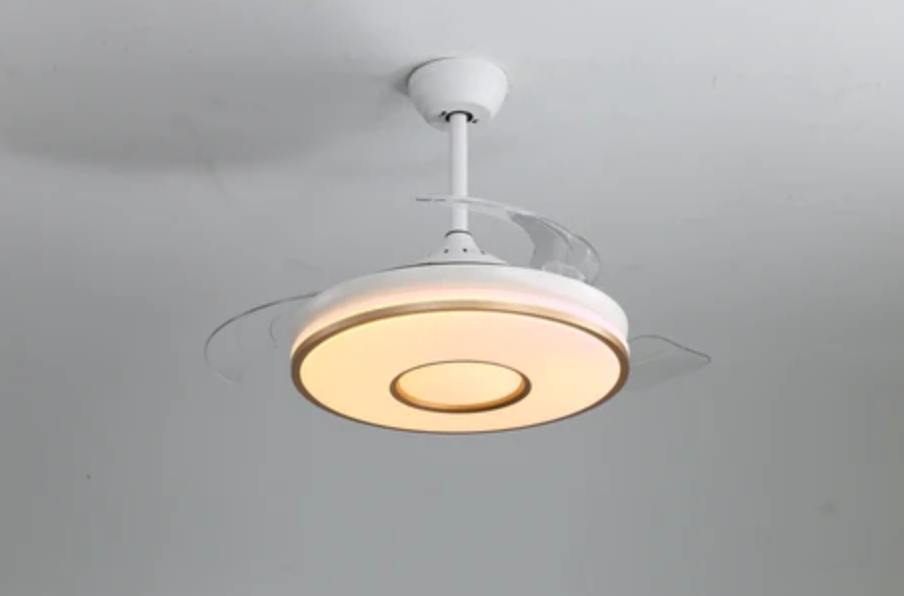
6 Important points about ceiling fans
A ceiling fan is an important part of every home's cooling system. Not only does it help circulate air, but it can also add a decorative touch to any room in the house. From traditional looks to modern styles, there are many different types of ceiling fans available to fit your taste and budget. With the addition of lighting kits or remote control options, ceiling fans can also provide additional convenience. Depending on the type of fan you buy, it can help reduce energy costs as well. Whether you're looking for a way to cool down a room or just add some style to your space, a ceiling fan is a great choice.

Ceiling fan control switch
While installing a ceiling fan in a kitchen can improve the circulation of the entire space, there are a number of factors that should be considered to choose the most suitable kitchen ceiling fan. If you need to control your luxury ceiling fans, consider using a remote control, a voice controller, or a WiFi ceiling fan switch.
Ceiling fan box
Installing a kitchen ceiling fan requires installing a tap box that separates the current safely from the wires and securely connects the ceiling fan to a power source. These tap boxes usually come in different sizes and functions, so the size and weight used to properly support ceiling fans should be considered.
Ceiling fan blades
The shape and size of the ceiling fan impeller is also an important consideration, and if your kitchen is limited, consider installing tin-strip blades, which will give the fan rotating capacity. Tin-strip blades are easy to clean and reduce complexity, but they also increase noise levels. If space is not very limited, it is recommended to install three, five or eight bladed fans, which can also increase the air volume.
Ceiling fan bracket
In addition, if the ceiling height is not very high or security risks exist, you are advised to install ceiling fan supports. The support holds the noisy ceiling fan in place and reduces fluctuations in air volume. Ceiling fan brackets also have different options that can be selected for specific needs, none of which are included in the original ceiling fan kit.
Ceiling fan bulbs
There are also different options for ceiling fan bulbs, which can be configured to suit specific needs. LED bulbs and Halogen bulbs are popular choices in the home because of their low power consumption and long life. Incandescent bulbs generate a lot of heat and have a much shorter life span than leds and Halogen bulbs.
Ceiling fan motor
Ceiling fan motor efficiency can be improved by using the following strategies:
1. Ensuring the blades are well balanced and aligned in order to reduce vibration and drag on the motor.
2. Using high-quality bearings that are capable of supporting the weight of the fan blades without excessive friction.
3. Installing an energy-efficient belt drive between the motor and the blades which reduces the load on the motor.
4. Selecting a fan size that is appropriate for the room size; larger fans have lower efficiency ratings than smaller ones.

5. Installing variable speed controls to allow for slower speeds when cooling needs are minimal and higher speeds when more air movement is desired.
6. Keeping the fan blades and motor clean of dust to limit the amount of drag on the motor.
7. Replacing older, inefficient models with newer, energy-efficient models that come with better motors.
8. Making sure all electrical connections are secure and in good condition to avoid power losses due to arcing or sparking.
9. Installing an AC/DC motor instead of an AC-only model. The DC motors are more efficient and offer greater power savings.
10. Adding insulation material to the walls, ceilings, and floors in order to reduce the amount of heat that is transferred into the room from outside sources. This will reduce the amount of energy needed for cooling, thus saving power.
11. Replacing an old fan motor with a new, energy-efficient model when the time comes to replace it. This will result in a noticeable savings in electricity bills over time.
12. Utilizing natural ventilation techniques such as cross-ventilation and stack effect by opening windows or using ceiling fans whenever possible.
I hope this article will help you know more about ceiling fan, just read it carefully.
